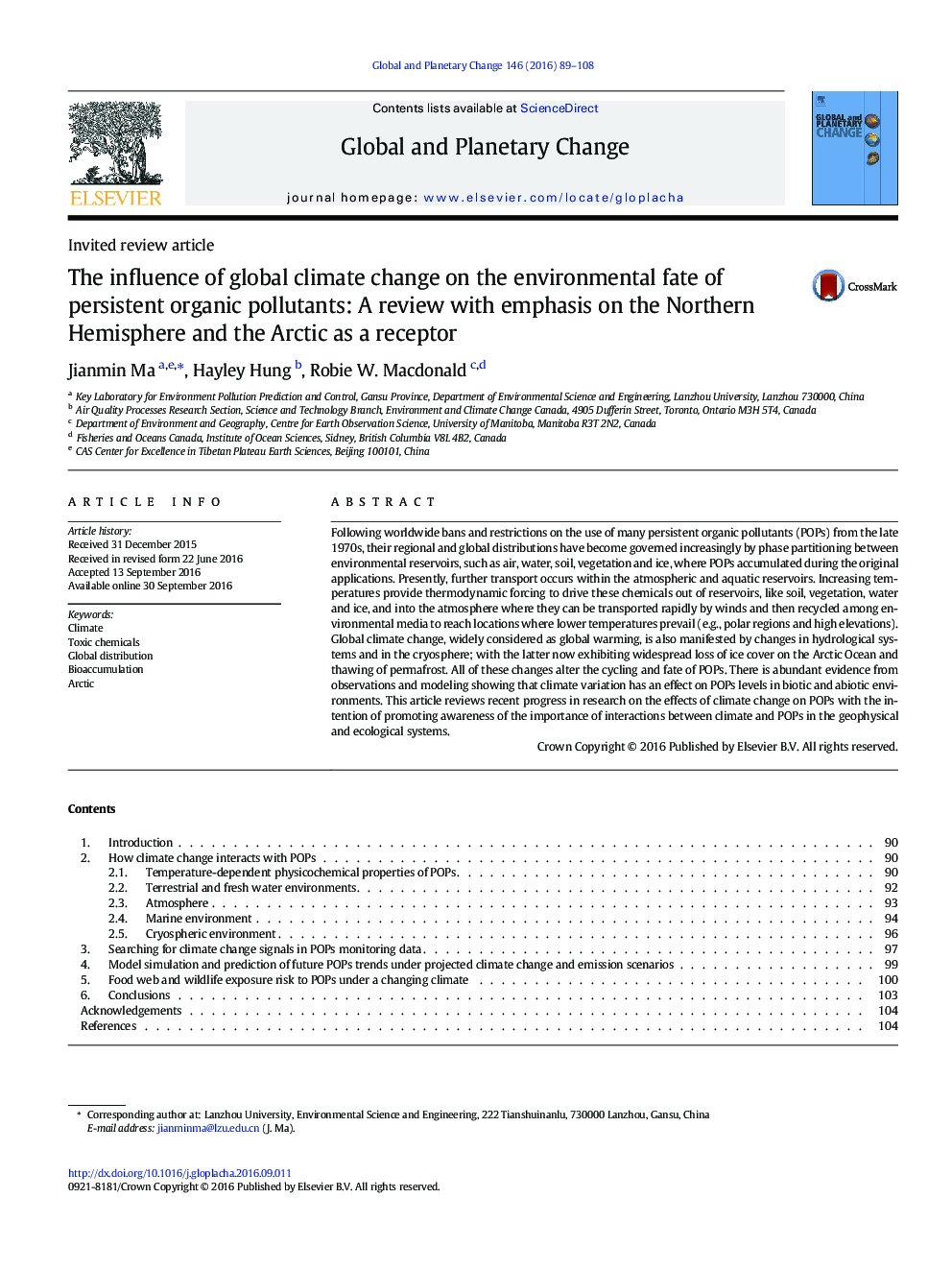| Article ID | Journal | Published Year | Pages | File Type |
|---|---|---|---|---|
| 6347873 | Global and Planetary Change | 2016 | 20 Pages |
Abstract
Following worldwide bans and restrictions on the use of many persistent organic pollutants (POPs) from the late 1970s, their regional and global distributions have become governed increasingly by phase partitioning between environmental reservoirs, such as air, water, soil, vegetation and ice, where POPs accumulated during the original applications. Presently, further transport occurs within the atmospheric and aquatic reservoirs. Increasing temperatures provide thermodynamic forcing to drive these chemicals out of reservoirs, like soil, vegetation, water and ice, and into the atmosphere where they can be transported rapidly by winds and then recycled among environmental media to reach locations where lower temperatures prevail (e.g., polar regions and high elevations). Global climate change, widely considered as global warming, is also manifested by changes in hydrological systems and in the cryosphere; with the latter now exhibiting widespread loss of ice cover on the Arctic Ocean and thawing of permafrost. All of these changes alter the cycling and fate of POPs. There is abundant evidence from observations and modeling showing that climate variation has an effect on POPs levels in biotic and abiotic environments. This article reviews recent progress in research on the effects of climate change on POPs with the intention of promoting awareness of the importance of interactions between climate and POPs in the geophysical and ecological systems.
Related Topics
Physical Sciences and Engineering
Earth and Planetary Sciences
Earth-Surface Processes
Authors
Jianmin Ma, Hayley Hung, Robie W. Macdonald,
